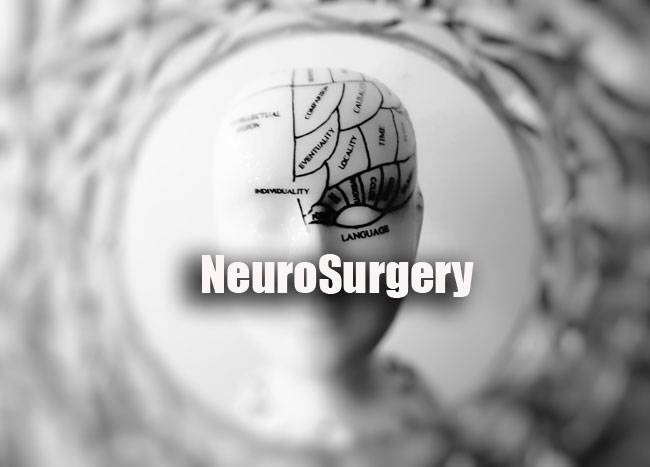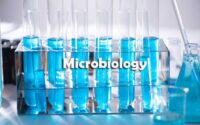Neurosurgery Practice Set
Neurosurgery Practice Set paper for the written examination is given below. Candidates who are looking for Neurosurgery exam Practice Set paper can find in this section. The applied candidates who are getting prepared for the Neurosurgery can view this page for the Neurosurgery Last Ten Years Practice Set Papers.

Download the Neurosurgery Practice Set & Solutions & make it as a reference for your exam preparation. Take advantage of these Neurosurgery Practice Set Papers in a proper manner to get qualifying Marks. Last 5 years Neurosurgery Practice Set Papers provided here. Candidates who are applied for the above exam can check and download the Neurosurgery Practice Set Papers from here.
Practice Set of Neurosurgery
1. Risk of INTRAVENTICULAR Haemorrhage in shunt insertion in absence of coagulopathy:
(1) 2%
(2) 4%
(3) 8%
(4) 10%
2. False statement about laproscopy surgery in patient with V-P shunt:
(1) ICP monitoring during laproscopy
(2) Absorption of CO2 from peritoneum cause arterial dilatation and increase ICP
(3) Insufflation pressure > 15 mmHg
(4) Temporary externalization of shunt during surgery
3. Stereotactic radiosurgery is NOT used in:
(1) small AVM
(2) vestibular schwannoma
(3) aqueductal stenosis
(4) trigeminal neuralgia
4. Inventor of Gamma knife:
(1) Lars Leksall
(2) Walter Dandy
(3) Harvey Cushing
(4) Victor Horsley
5. What type of respiration will be seen if spinal cord is transected between pons & medulla?
(1) No effect
(2) Apnoea
(3) Irregular & gasping
(4) Slow & deep
6. Structure which is perforated during third ventriculostomy:
(1) Lamina terminalis
(2) Septum in aqueduct
(3) Premamillary membrane
(4) None of the above
7. Best approach for cervical disc surgery:
(1) Anterior
(2) Posterior
(3) Endoscopic
(4) Lateral
8. Most Common surgical treatment for refractory seizure:
(1) Corpus callosum resection
(2) Anterior temporal lobe resection
(3) Hemispherectomy
(4) Selective anygdalo-hippocampectomy
9. Site of DBS(deep brain stimulation) for depression:
(1) Thalamus
(2) Caudate nucleus
(3) Genu
(4) Subgenual cingulate gyrus
10. Ashworth Score of a patient with spasticity having “slight increase in muscle tone & a catch with flexion or extension:
(1) 1
(2) 3
(3) 2
(4) 4
11. Ablative procedures for spasticity are all except:
(1) Intrathecal baclofen
(2) Phenol nerve block
(3) Selective dorsal rhizotomy
(4) Stereotactic thalamotomy
12. Treatment for torticollis are all except:
(1) Trans epidermal neurostimulation to the neck
(2) Local injection of botulinium toxin
(3) Microvascular decompression of 9th CN
(4) Sectioning of anastomotic branches between 11th CN & upper cervical posterior root
13. Most common etiology for Hemifascial spasm:
(1) Idiopathic
(2) Tumoural compression of nerve
(3) Vascular compression syndrome
(4) Bell’s palsy
14. Upper extremity sympathectomy for hyperhidrosis:
(1) Removal of T1-T4 ganglion
(2) Removal of T2 ganglion only
(3) Removal of T7 ganglion
(4) None of the above
15. Brachiotherapy used in pituitary adenoma:
(1) Yattrium 90
(2) Iridium 192
(3) Cesium
(4) Cobalt
16. Dorsal root entry zone (DREZ)lesion useful in management of all except:
(1) Spinal cord injuries
(2) Post herpetic neuralgia
(3) Phantom limb
(4) Cancer pain
17. Duration of analgesia provided by Intraventricular Morphine in cancer patients:
(1) 8 hours
(2) 12 hours
(3) 24 hours
(4) 16 hours
18. True statement regarding Corpus callosotomy:
(1) WADA test is not recommended in left handed individuals
(2) Sparing anterior commissure prevent disconnection syndrome
(3) Most effective in simple or complex seizure
(4) MRI coronal section are ideal for assessing extent of division of corpus callosum
19. Outcome of seizure surgery “modified Engel classification”, class 3
(1) seizure free or residual areas
(2) worthwhile seizure reduction
(3) rare disabling seizures
(4) no worthwhile selzure improvement
20. Maximum tolerance dose of radiation to brain is:
(1) 60 Gy
(2) 30 Gy
(3) 15 Gy
(4) 100 Gy
| Practice Set | MCQs |
| Quiz | Questions and Answers |
21. CNS tumour that melt away with radiation therapy but tends to recur later:
(1) Lymphoma
(2) Medulloblastoma
(3) Germ cell tumour
(4) Both (1) & (3)
22. Treatment for radiation necrosis include all except:
(1) Excision if significant mass effect
(2) Hyperbaric O2
(3) Stereotactic radiosurgery
(4) Steroids
23. Following is used in Gamma knife radiosurgery:
(1) Co-60
(2) I-131
(3) Proton
(4) Th-201
24. Maximum recommended radiation dose for Thyroid:
(1) 100 cGy
(2) 10 cGy
(3) 50 cGy
(4) 20 cGy
25. General guidelines for considering SRS for brain metastasis are all except:
(1) Total tumour number < 10
(2) Total tumour volume < 15 cm3
(3) Single tumour volume > 10 cm3
(4) No leptomeningeal disease present
26. Which of the following doesn’t indicate seizure localization?
(1) Direct observation
(2) Clinical examination
(3) Intra-operative EEG
(4) Cerebral imaging of epileptogenic foci
27. Scizure surgery Is indicated in:
(1) Seizures not responding to single drug
(2) Bilateral foci
(3) Epileptogenic foci in Broca’s area
(4) None of the above
28. Nobel prize awarded in psychosurgery
(1) Irwing Cooper
(2) Egaz Moinz
(3) Charles Frazier
(4) Jacob Chandy
29. First department of neurosciences in India was setup in and at:
(1) 1936, Chandigarh
(2) 1941, Chennai
(3) 1949, Vellore
(4) 1946, Kolkata
30. Neurosurgeon of Millennium is credited to:
(1) Sir Victor Horsley
(2) M. Gazi Yasargil
(3) Harvey Cushing
(4) Von Recklinghausen
31. First removal of ruptured inter-vertebral disc was done by:
(1) Mixter & Barr
(2) Victor Horsley
(3) Walter Dandy
(4) Harvey Cushing
32. First neurosurgeon to use operating microscope in humans:
(1) M.G. Yasargil
(2) Karl Zeiss
(3) Theodore Kurze
(4) W.Mcewan
33. “Witzelsucht” or Pathological joking associated with lesion of:
(1) Frontal lobe
(2) Temporal lobe
(3) Basal ganglia
(4) Corpus callosum
34. Frontal lobe cortical function assessment test is:
(1) Clock face drawing
(2) Calcification
(3) Folding an envelope & apply seal
(4) Motor luria test
35. Prosapognosia is a function of:
(1) Frontal lobe
(2) Temporal lobe
(3) Parietal lobe
(4) Occipital lobe
36. “See-Saw Nystagmus” seen in lesion of:
(1) Upper midbrain
(2) Foramen magnum
(3) Suprasellar region
(4) Frontal eye field
37. Root value of Finger flexion reflex:
(1) C6-T1
(2) C7-C8
(3) C5-T1
(4) C8-T1
38. In Somatosensory Evoked Potential (SEP) N13 lead corresponds to:
(1) Root entry zone
(2) Cervico medullary junction
(3) Erb’s point
(4) Primary sensory cortex
39. “Dive Bomber” sound in EMG during which phase?
(1) Phase 1
(2) Phase 3
(3) Phase 2
(4) Phase 4
40. Rule of Spence:
(1) Cl lateral masses overhang C2 ≥ 7 mm
(2) Cl lateral masses over hangs C2 ≥ 5mm
(3) Cl lateral masses overhangs C2 ≥ 8 mm
(4) Cl lateral masses overhangs C2 ≥ 9mm
41. Best sequence for detecting Acute SAH on MRI:
(1) FSE (Fat Spin Echo)
(2) FLAIR
(3) STIR
(4) DWI
42. In MRS (MR Spectroscopy) findings in case of Cerebral Abscess:
(1) Increased lactate & increased NAA
(2) Increased lactate & decreased NAA
(3) Increased lactate & increased choline with decreased NAA
(4) Decreased lactate & increased choline
43. Red colour in DTI images indicates:
(1) Superior inferior tracts
(2) Horizontal tracts
(3) Anterior-posterior tracts
(4) Short U fibres
44. Wernick’s pupil seen in lesion of:
(1) Optic nerve
(2) Edinger Wesphal nucleus
(3) Anterior to LGB
(4) Occipital cortex
45. Traube Hering Mayer waves represent:
(1) Lundberg A wave
(2) Lundberg B wave
(3) Lundberg C wave
(4) None of the above



